Our Story
History of Maggie's Hong Kong
Maggie Keswick Jencks spent her younger years living in China and Hong Kong with her parents. Together they set up the Keswick Foundation in Hong Kong to support pilot projects addressing areas in the medical and social systems that need review.
In 2005, the Keswick Foundation approached Maggie’s UK to pioneer the implementation of the first Maggie’s outside of the UK. In 2008 Maggie’s Hong Kong opened their temporary centre and in 2013 Maggie’s Hong Kong were proud to relocate into their permanent, purpose built centre designed by Frank Gehry.
Located in the grounds of the Tuen Mun Hospital the Centre provides a safe haven for visitors.
Designing Maggie's Centre Hong Kong
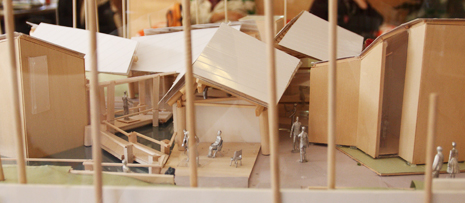
The philosophy behind Maggie's Cancer Caring Centres is that a person’s immediate environment has a direct impact upon their well-being. Founded by Maggie Keswick Jencks, who died of breast cancer in 1995, and her husband Charles Jencks, Maggie’s Centre was created with the belief that patients and their loved ones can take an active role in their treatment. The purpose of Maggie’s Centre is to provide a calming atmosphere in which newly diagnosed, recently relapsed, and terminally ill cancer patients and their family members can seek support and information on their illnesses. This intimate building is intended to facilitate the many stages of the healing process.
 Designed by the acclaimed architect Frank Gehry, Maggie's Centre Hong Kong is sited at the end of a lawn near the Tuen Mun Hospital oncology unit. The site was chosen, in part, for the existing grove of mature trees that serve as a buffer between the Centre and the densely populated area. The building is arranged as a series of connected pavilions, arranged to encourage movement between the interior and the landscape.Rooms open out to the surrounding gardens or have private terraces overlooking the pond. There is a public living and dining area that serves as the focal point of the building, with views of both the ponds and gardens. The Centre could be thought of as a Chinese garden inspired by, though not beholden to, the Suzhou tradition.
Designed by the acclaimed architect Frank Gehry, Maggie's Centre Hong Kong is sited at the end of a lawn near the Tuen Mun Hospital oncology unit. The site was chosen, in part, for the existing grove of mature trees that serve as a buffer between the Centre and the densely populated area. The building is arranged as a series of connected pavilions, arranged to encourage movement between the interior and the landscape.Rooms open out to the surrounding gardens or have private terraces overlooking the pond. There is a public living and dining area that serves as the focal point of the building, with views of both the ponds and gardens. The Centre could be thought of as a Chinese garden inspired by, though not beholden to, the Suzhou tradition.
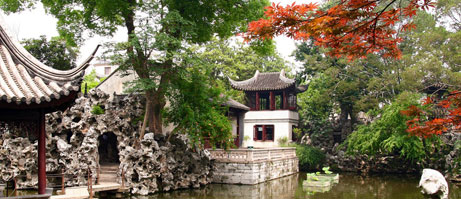
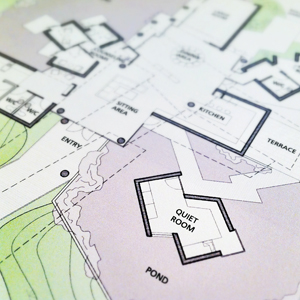 The building acts as a bridge over a pond surrounded by four different gardens. The building splits the pond into two distinct bodies, each serving a different purpose. One pond is orientated towards the lawn and the distant mountains. A private counseling room overlooks this pond and opens onto two balconies. These two balconies allow users to step outside, stand above the ponds, and enjoy the view. On the other side of the building is the second, smaller pond. Paired with trees and a garden, it is the more protected pond surrounding another counseling room intended for meditation and contemplation. This counseling room is accessible only by a short bridge. The path over the bridge leads to a protected garden filled with native flowering plants and trees. This garden surrounds a third counseling room. A bamboo fence provides the garden both protection from a busy street and helps to create a more intimate environment than the public lawn.
The building acts as a bridge over a pond surrounded by four different gardens. The building splits the pond into two distinct bodies, each serving a different purpose. One pond is orientated towards the lawn and the distant mountains. A private counseling room overlooks this pond and opens onto two balconies. These two balconies allow users to step outside, stand above the ponds, and enjoy the view. On the other side of the building is the second, smaller pond. Paired with trees and a garden, it is the more protected pond surrounding another counseling room intended for meditation and contemplation. This counseling room is accessible only by a short bridge. The path over the bridge leads to a protected garden filled with native flowering plants and trees. This garden surrounds a third counseling room. A bamboo fence provides the garden both protection from a busy street and helps to create a more intimate environment than the public lawn.
In addition to the three counseling rooms and the living and dining areas, the building has a pantry, small library, function room, an office, and a communal terrace.
Landscape design of Maggie's Centre Hong Kong

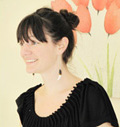 Lily Jencks, Daughter of Maggie Keswick Jencks, received her training in architecture and landscape architecture in the United States and is now practicing in London. She worked in the office of Gehry Partners as part of the design team for Maggie's Hong Kong with Ronald Lu and Partners, and has designed the landscape for the center with the Hong Kong team of Urbis Limited. Here she discusses the building and landscape design for Maggie's Hong Kong.
Lily Jencks, Daughter of Maggie Keswick Jencks, received her training in architecture and landscape architecture in the United States and is now practicing in London. She worked in the office of Gehry Partners as part of the design team for Maggie's Hong Kong with Ronald Lu and Partners, and has designed the landscape for the center with the Hong Kong team of Urbis Limited. Here she discusses the building and landscape design for Maggie's Hong Kong.
The wind gently rustles the leaves, shadows flutter on a white wall, and the reflection of the sun on a rippling pond dances against the stone. This experience of calm and respite is hard to imagine in the surrounding context of hospital buildings and dense city high rises, however, Maggie's Center in Tuen Mun provides a place apart. This is the place to calmly consider the difficult journey of cancer treatment and to find new friends with whom to face the challenge of living with cancer. An important role in creating this atmosphere is the design of both the architecture and landscape, providing a warm and loving environment.
The center is arranged as pavilions in a garden, based on the organization of a Chinese Scholars garden as discussed in Maggie Keswick's book 'the Chinese Garden'. We have taken the experience of calm, the reciprocity between nature and man, and the intimate spaces of quiet contemplation found in this traditional design, to create something quite new, that will help with the extraordinary work of the Maggie's.
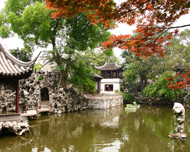 The building is organized to create a continuous flow between interior and exterior, so that each room has a different view and relationship to the garden or ponds. At the center of the building is the kitchen, the social hub of all Maggie's Centers, where someone is always making tea or doing some light cooking. This is the heart of the building, a friendly casual meeting spot where people can come and go as they please. There is a garden consulting room, slightly separated from the main building, where families can meet and have more personal counseling for their specific needs. On the other side of the building there is a library pavilion reached across a bridge, where you can have quiet consultations, curl up with a book, or simply meditate watching the play of water and light reflected off the pond.
The building is organized to create a continuous flow between interior and exterior, so that each room has a different view and relationship to the garden or ponds. At the center of the building is the kitchen, the social hub of all Maggie's Centers, where someone is always making tea or doing some light cooking. This is the heart of the building, a friendly casual meeting spot where people can come and go as they please. There is a garden consulting room, slightly separated from the main building, where families can meet and have more personal counseling for their specific needs. On the other side of the building there is a library pavilion reached across a bridge, where you can have quiet consultations, curl up with a book, or simply meditate watching the play of water and light reflected off the pond.
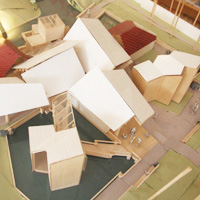 The path over the bridge takes you on through the garden, weaving through several places to sit, with native plants and sweet smelling flowers — habitat for birds and people alike.
The path over the bridge takes you on through the garden, weaving through several places to sit, with native plants and sweet smelling flowers — habitat for birds and people alike.
The sensations of Maggie's are not extravagant but of a quiet calm dignity. The building and the garden, the plants and the materials, have all be designed to give heart and strength. Maggie's is a place to be reminded of the beauty of your surroundings, and find strength from people who have the time and energy to really care for you. In the words of my mother, we hope it will help all visitors to the center, 'not to lose the joy of living in the fear of dying'.
Opening of the first purpose-built Maggie’s Cancer Caring Centre in Hong Kong
Maggie’s Centre Hong Kong officially opened its purpose-built centre on March 7th, 2013. The opening of this new building marks a promising beginning of the next phase of Maggie’s Centre, which has been operating from an interim site since December 2008.
We were delighted that over 120 guests, including professional advisers, donors and friends joined us at our opening event in the morning, while 300 service users, volunteers and staff from Tuen Mun Hospital attended the social gathering in the afternoon, filling the Centre with laughter and joy. On this particular memorable moment, we pledge to continue to do our utmost to bring our service to new horizons.
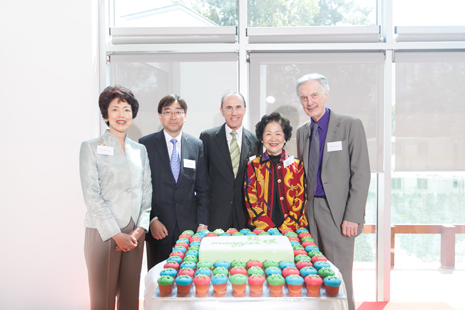
Left to Right: Mrs Eleanor Ling, Dr Ko Wing-Man, Mr Keith Kerr, Mrs Anson Chan, Dr Charles Jencks
While our chairman, Mr Keith Kerr thanked all of our guests who have generously supported and contributed to this project, we were also honoured to have co-founder Dr Charles Jencks, Secretary of Food & Health Dr Ko Wing-Man give speeches as part of our opening ceremony, together with Mrs Eleanor Ling, who spoke on behalf of the Keswick Foundation. Maggie’s patron, Mrs Anson Chan cut the cake as part of our celebration.
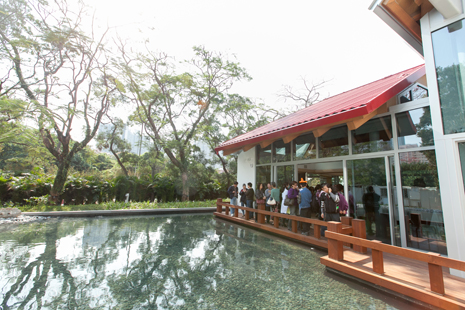
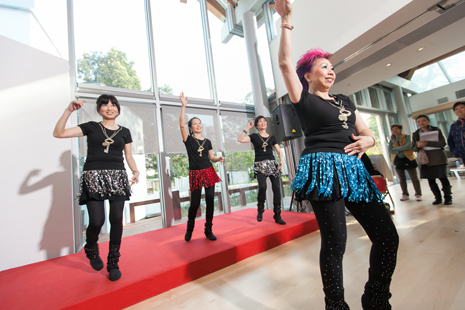
Our service users entered the new Centre for the first time during the opening event, marveling at the welcoming space designed especially for them. Many enjoyed in particular the peaceful, scenic outdoor environment, while others performed boisterously on stage, singing and dancing.
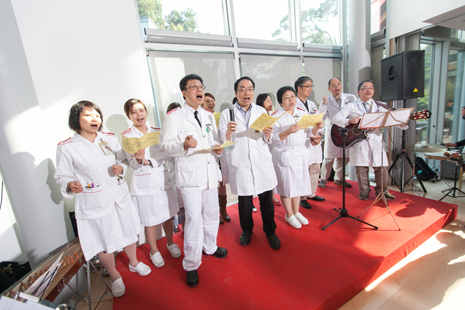
We also welcomed our friends from Tuen Mun Hospital. The oncology team delighted everyone with their animated singing performance.
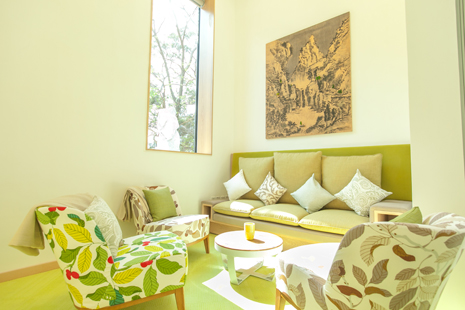

Our new centre is now equipped with three separate counseling rooms, and one activity room designated for the many programmes we offer. The surrounding tranquil landscape of water and greenery offers peace and quiet.